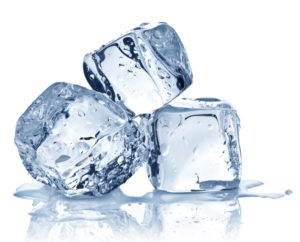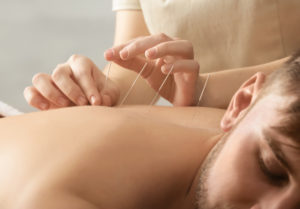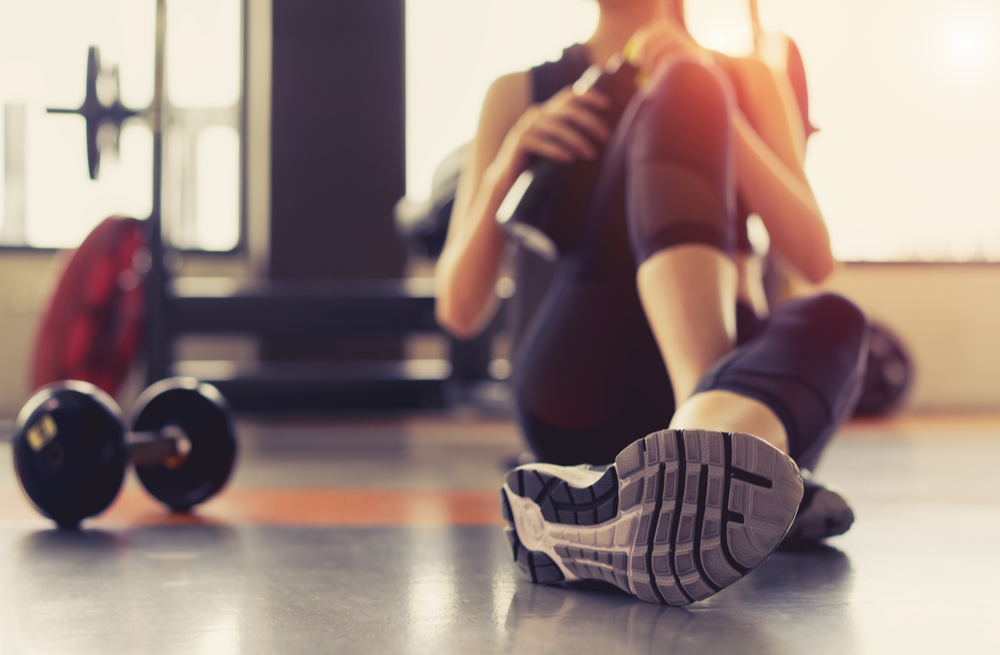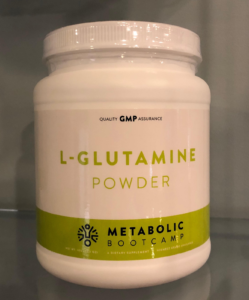Training hard is a prerequisite for accomplished athletes. Even weekend warriors, who strive to achieve basic goals, know the importance of training with purpose and intensity every time they train. What can often be overlooked though, is how we recover from these workouts. Having a plan to recover well is essential to maintaining a consistent training regimen. Whether you’re training for the next big race or training to drop a few extra pounds, proper recovery can be the biggest factor in reaching your goals and preventing overuse injuries. We hope that this list of strategies for a faster recovery after training will help you to reach your goals this season.
1. Cryotherapy
Doctors have long recommended using ice on injured and painful muscles. Doing so may increase blood circulation after the ice is removed, promoting healing and pain relief. The research on the effectiveness of cryotherapy is immense. Studies have found that cryotherapy offers temporary pain relief from arthritis, sprain and strains, and that it can reduce the damaging effects of intense exercise. Using ice is effective for sore muscles and joints, but an ice bath has been shown to be even more effective. Try immersing yourself in an icy water bath for 12-15 minutes to maximize the therapeutic effects.
A new form of cryotherapy is becoming increasingly popular. Whole body cryotherapy (WBC) tanks provide whole body exposure to dry air at cryogenic temperatures lower than −110°C. These have become widely popular in sports medicine. They are often used to enhance recovery after injuries and to counteract inflammatory symptoms resulting from overuse or pathology. The number of studies about the use of whole-body cryotherapy in sports medicine is growing, however, it is still lower than more traditional forms of cryotherapy.
I highly recommend at a minimum that you use ice in a zip lock bag on any overused or frequently sore areas, before pain begins. I do not recommend using gel freezer packs, frozen peas, or expensive ice braces. For now, ice in a zip lock bag or an ice bath is the most trustworthy and least expensive recovery tool that you can use. Whole body cryotherapy tanks are promising and perhaps in the future will be a more widely available treatment option. For now, remember that cryotherapy can help with muscle pain, as well as some joint and muscle disorders, such as arthritis. It may also promote faster healing of athletic injuries.
2. Compression boots and socks
We’ve long praised the benefits of compression sock/sleeves for running and recovery. These recovery aids improve your circulation simply by the virtue of being so tight, they literally squeeze your muscles and allow blood to flow through the muscles faster. With the help of compression, you can recover faster from tougher workouts. So a weight-lifting session or a very long run or bike ride, that would have previously left you sidelined for a couple of days, no longer ruins your ability to walk up stairs normally for the rest of the week.
Compression socks/sleeves have been shown to improve performance during an event but their best use may be after the event. Studies comparing the usefulness of compression socks/sleeves have found that wearing them immediately after training and while sleeping at night, decreases muscle soreness more than wearing them while training.
The effectiveness of compression socks as a post-training recovery tool has given rise to more sophisticated compression boots from brands like NormaTec, Recovery Pump, and others. These compression boots use a sophisticated pulse system to systematically and dynamically compress your feet, gradually moving its way up your legs to squeeze and massage your muscles. Instead of a static compression (like a sleeve), the system pulses for a more dynamic compression, further enhancing the movement of fluid through your muscles. These systems are not just for elite athletes, as more brands introduce their versions of these mechanical compression systems, look for more affordable options in the near future.
3. L-Glutamine
Do you ever feel great all day after a hard workout, but you wake up the next day so sore you can barely walk? Exercise is supposed to be good for you, correct? Actually, it is, and that soreness means that you worked hard enough to get results. What you need now is to create the right internal environment for muscle recovery. That is where supplementation can make a major difference in your recovery.
L-glutamine plays a major role in helping your muscles repair themselves after stress. Glutamine is an amino acid. You get glutamine in your diet when you eat protein, and your body makes it as well. It removes waste products like ammonia from the bloodstream, and participates in the proper function of your brain, digestive system and immune system.
Your body stores glutamine for when it’s needed, but people who regularly stress their bodies with heavy or prolonged exercise may deplete their glutamine stores. The body can’t produce it fast enough to meet the demand, so a supplement may be required. When you stress your muscles, you cause muscle damage. As the body repairs that damage, it also makes the muscle stronger and a little bit larger to guard against future stress. Small amounts of muscle damage are good because they lead to gains. The problem is that your body may require several days of rest to repair that damage, meaning you can only work out once or twice per week, and that kind of frequency won’t allow you to progress.
Many athletes turn to supplements like L-glutamine to hasten the recovery process, as L-glutamine aids recovery by moving nitrogen atoms to where they are needed. To build muscle, you need to maintain a positive nitrogen balance. After a heavy workout, rushing nitrogen to your damaged muscles stimulates tissue repair. If glutamine is lacking in the body, the damaged tissue may stay damaged because it doesn’t have the materials to rebuild. For endurance athletes, L-glutamine can also help to boost the immune system after an extended event like a marathon or triathlon.
4. Foam Rollers
Foam rollers have been hailed by practitioners and trainers for many years. It is often described that foam rolling is useful to reduce trigger points or relax tight muscles. However, research does not support this. Foam rollers have shown to improve athletic performance and recovery through a different means. The most proven mechanism of recovery with foam rollers is via pain modulation.
Foam rollers appear to be able to reduce pain sensitivity in muscles perhaps by increasing blood flow to the injured areas. This would in turn remove waste metabolites that are irritating to the body. Foam rollers may also reduce pain by repeatedly placing manual pressure on the muscle spindles. This activity reduces the synaptic firing of the pain receptors lowering the number of signals sent to the brain from the sore muscle. It does not appear that foam rollers improve the feed forward mechanism of the brain, also known as neural drive. Any pre-participation foam rolling benefit would stem from the increased pain tolerance during training.
5. Acupuncture/Dry Needling
 If you are experiencing pain from training, consider acupuncture or dry needling for pain relief and sports recovery before more invasive modalities. Although these two modalities are different, for the purpose of this discussion we are going to group them together. If you want to know more about how acupuncture and dry needling differ, read our article on the subject.
If you are experiencing pain from training, consider acupuncture or dry needling for pain relief and sports recovery before more invasive modalities. Although these two modalities are different, for the purpose of this discussion we are going to group them together. If you want to know more about how acupuncture and dry needling differ, read our article on the subject.
Acupuncture and dry needling are treatment options for releasing knots in soft tissues known as myofascial trigger points. These trigger points are hypersensitive areas in muscles, ligaments and tendons that often cause pain and stiffness after an injury.
To relieve this discomfort, we insert a thin filament needle into the painful trigger points. Doing so stimulates the healing process to promote improved function and pain relief.
Research shows inserting a needle into a trigger point creates a microtrauma that changes the electrical and chemical activity in the area and normalizes it. This helps to restore function and relieve pain. The trigger point is thus deactivated and the surrounding muscle can relax. This also draws in white blood cells and plasma cells to begin the healing process. Many athletes prefer dry needling over other treatments because it does not involve medication that causes side effects, and it complements other recovery techniques. Not everyone responds to the treatment the same way, but for most people, it is an incredibly effective method for pain relief and recovery.
We hope that this season is one of your best. If you run into an injury or desire to prevent one, we are here to help, so give us a call or send us an email. We do what we do everyday, because it is our goal at Core to help you become healthier than you have ever been.
Start your recovery off right! Now through March 26 we are offering 10% off Foam Rollers, L-glutamine, and Dry Needling Sessions.

Daryl C. Rich, D.C., C.S.C.S., A.R.T.







